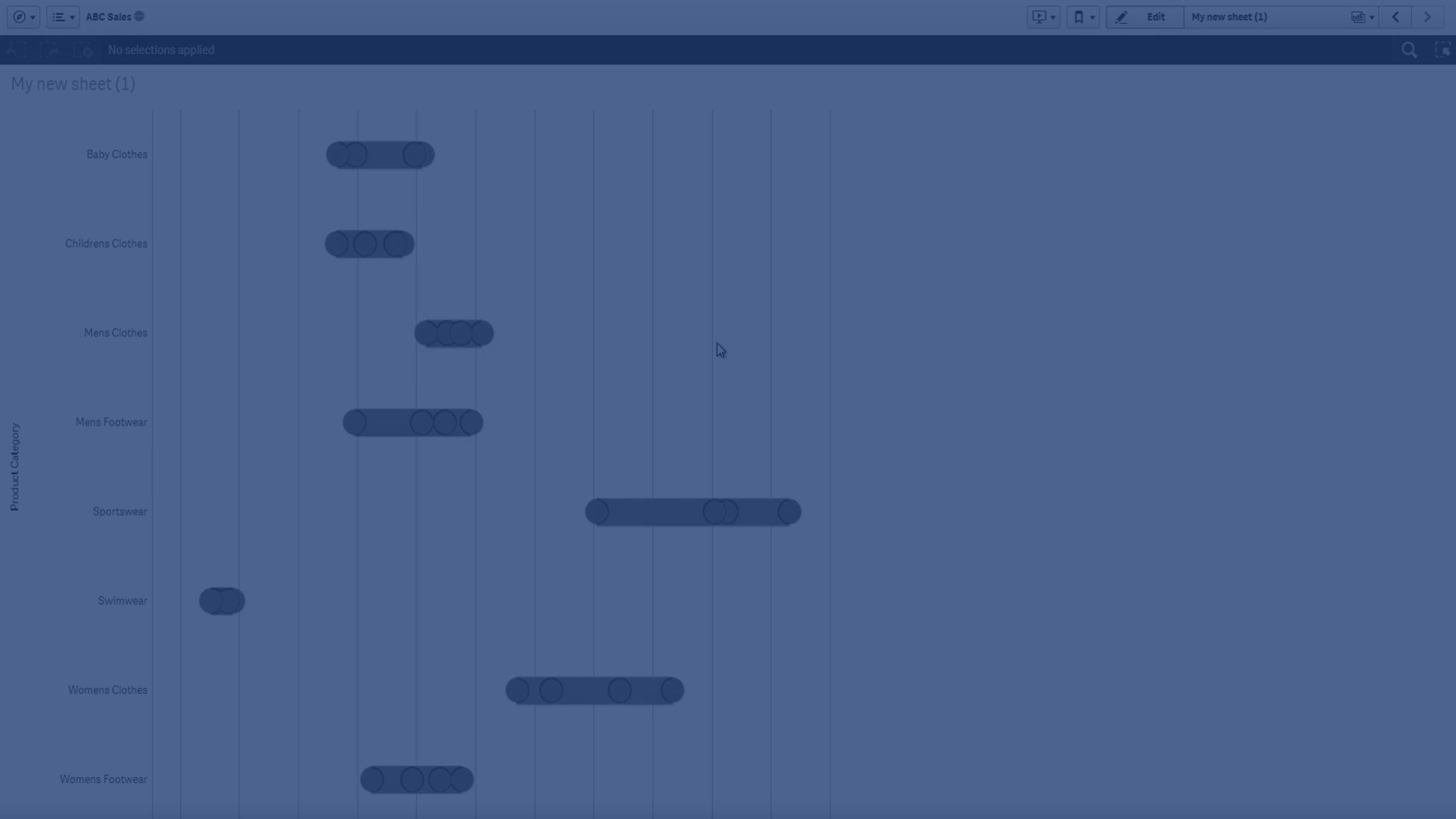Distribution plot
The distribution plot is suitable for comparing range and distribution for groups of numerical data. Data is plotted as value points along an axis.
You can choose to display only the value points to see the distribution of values, a bounding box to see the range of values, or a combination of both as shown here:

When to use it
The distribution plot is suitable for comparing range and distribution for groups of numerical data.
Advantages
The distribution plot visualizes the distribution of data.
Disadvantages
The distribution plot is not relevant for detailed analysis of the data as it deals with a summary of the data distribution.
Creating a distribution plot
You can create a distribution plot on the sheet you are editing.
In a distribution plot you need to use one or two dimensions, and one measure. If you use a single dimension you will receive a single line visualization. If you use two dimensions, you will get one line for each value of the second, or outer, dimension.
Do the following:
- From the assets panel, drag an empty distribution plot to the sheet.
-
Add the first dimension.
This is the inner dimension, which defines the value points.
-
Add a second dimension.
This is the outer dimension, which defines the groups of value points shown on the dimension axis.
-
Click Add measure and create a measure from a field.
Viewing the distribution of measure values in a dimension with a distribution plot
When you have created the distribution plot, you may want to adjust its appearance and other settings in the properties panel.
For more information, see Changing the appearance of a visualization.
Display limitations
Displaying large amounts of data in a distribution plot
When displaying large amounts of data in a distribution plot, the message "Currently showing a limited data set." is shown to indicate that not all data is displayed.
- If the chart uses more than one dimension, 3000 data points are displayed.

